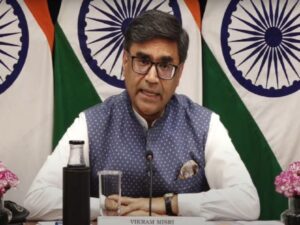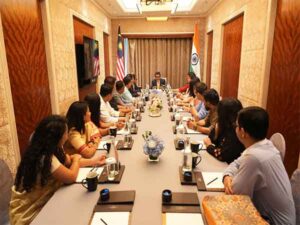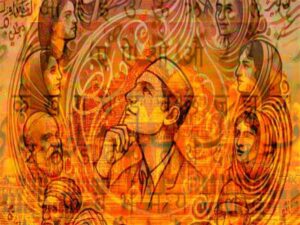Partition lives on in north-east Indian literature
Kolkata, Jun 15 (360info) North-east India home to more than 200 Indigenous tribes with distinct cultural practices, languages, and social systems found itself in turmoil after the influx of refugees due to the Partition of India in 1947.
The region received a large influx of Bengali-speaking migrants from then East Pakistan (previously called East Bengal and now Bangladesh) who settled in various parts of Assam, Meghalaya and Tripura.
The echoes of that migration have reverberated in the literature emerging from decendants of both the settled communities and the refugee population years later.
Studies of such shock mobility suggest that ideas of citizenship and identity continue to be challenged for generations.
In the general environment of mistrust following the Partition, Indigenous communities especially in Assam and Meghalaya voiced concerns about the refugees burdening the state’s limited resources.
Alongside this, the demand for Assamese to be the only official language in Assam made matters worse when the Bengali-speaking populace in Barak Valley called for official matters to also be made available in their language in the valley.
These conflicts created a ripe ground for ethnic and linguistic struggles in the region.
The most prominent was the Assam Movement, also known as the Anti-Foreigners Agitation, which lasted from 1979 till 1985.
The primary aim of the movement was to detect and deport ‘foreigners’ Bengali refugees in this case from Assam.
These movements were accompanied by violence that stemmed from deep-rooted differences along the lines of ethnicity and language.Although now mostly memories of the past, these movements have left a lasting impact in shaping the consciousness of the ‘other’ which has subsequently characterised the English literature emerging from the north-eastern states.
The work of the Shillong Poets provides insights to understanding how the binary of ‘us’ and ‘them’ functions.
Kynpham Sing Nongkynrih, one of the most distinctive poets from the north-east and belonging to the Khasi tribe, views the ‘other’ from an Indigenous point of view:In the park I saw Those strange flowers again That I have seen bossing around Like flowers, only strangers And strange ways have come To bloom in this landThe Bengali poets from Shillong have their own take on this othering.
These poets, mostly descendants of erstwhile East Bengal refugees, despite growing up in the region (the north-east or Shillong) find their identity challenged as the ‘other’.
Ananya Guha’s untitled poem states: my mind sinks into horizons of a hill town which I ask to love, MeAs a refugee descendent, Nabanita Kanungo voices the pain of being uprooted twice over once during the Partition in 1947 and again due to the ethnic uprisings in the poem ‘The Missing Tooth’.
There were reasons for which we had it painfully uprooted And now the gap of the missing tooth Is an embarrassing memory in the mouth.
This sense of unbelonging is explored further in Siddhartha Deb’s novel The Point of Return which tells the story of a Bengali father-son duo immersed in the struggle of finding themselves in a small town of the north-east embroiled in ethnic clashes.
Clearly, even after more than seventy years of refugee settlement in the region, the footfall of partition still echoes in the identity politics of ‘us’ and ‘them’. This is interesting because it suggests that migration is a memory loop passed down through generations, and can become like a festering sore that afflicts even the migrants’ descendants.
The idea of the refugee or the migrant as ‘other’ was extended to anyone who was not indigenous to the north-east.
Mamang Dai’s celebrated work, The Legends of Pensam refers to a group of labourers from the mainland as follows:Workmen sucked on wet bidis and chirped away at the mountainside.
Their women stood by and looked askance with dark, savage eyes.
A row of labour sheds hung on to the hillside and here they lived, loved, bathed naked on the roadside, fought bitterly, and sometimes murdered each other.
Another important consequence of the refugee condition is the emergence of literary or cultural movements.
Unisher Sahitya, following the Bhasha Andolan of 1961, which broke out in the Barak Valley of Assam following the Assam government’s proposal to enact a law to declare Assamese as the only official language of the state in October 1960, is one such instance.
Massive protests erupted all across the valley which eventually led to the death of 11 young protestors on 19 May 1961 (nineteenth day or Unish in Bengali and hence the name Unisher Sahitya or literature related to 19 May).
This event not only marked the retraction of the government’s decision but also turned out to be a watershed moment in the Barak Valley’s history.
Around it has been built a Bengali literary tradition that is unique in its own way Unisher Sahitya is about protest, language recognition and assertion of identity.
Similarly, Miya poetry (poetry of miyas or Muslims), written by Bengali Muslims of the char area of the Brahmaputra Valley, is another literary tradition, the emergence of which is rooted in the politics of identity and dissent against ethnic and linguistic othering.
The Partition of India, as an example of shock mobility, has manifested in a rather unusual way in the literature of north-east India. It still continues to have an afterlife even though the moment of migration has long passed.
While its effects did not echo as much in the literature of the north-east in terms of representation of migrants, their crises, or the violence they faced as it did in Partition literature, it has left an indelible mark through the distinctive literary practices it has created all the same






